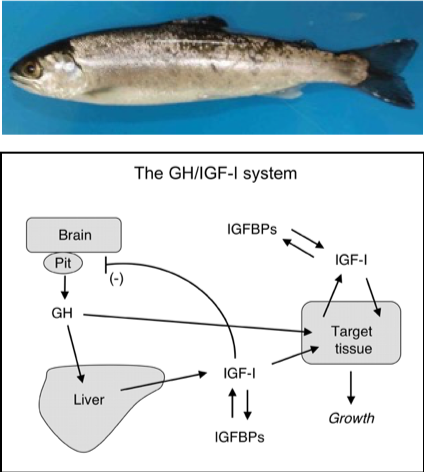
Growth
of fish is influenced by various environmental factors such as photoperiod,
water temperature, feeding ration and stress. Such stimuli are integrated by
the brain and hormones regulate growth. Growth hormone (GH) and insulin-like
growth factor (IGF)-I are two major hormones regulating growth. GH stimulate
growth directly acting on target tissues such as muscle and bone or indirectly
through stimulating hepatic production of IGF-I. This system is called “the
GH-IGF-I system”. Circulating IGF-I mediates action of GH and has a negative
feedback effect on the secretion of GH from the pituitary gland.
Most circulating IGF-I is bound to one of
six IGF-binding proteins (IGFBPs). IGFBPs can inhibit or stimulate the activity
of IGF-I depending on the type, post-translational modification and
microenvironment. Thus, IGFBPs play a key role in modulating growth. Teleosts
have up to 12 IGFBP subtypes due to the third-round whole genome duplication in
this lineage. In addition, salmonids are tetraploid origin and thus have 22
subtypes.
Goal: We are interested in unraveling
functions of IGF-I and IGFBPs in salmonids and utilize them as indices of
growth. Availability of growth indices is useful to improve aquaculture and
resource enhancement.